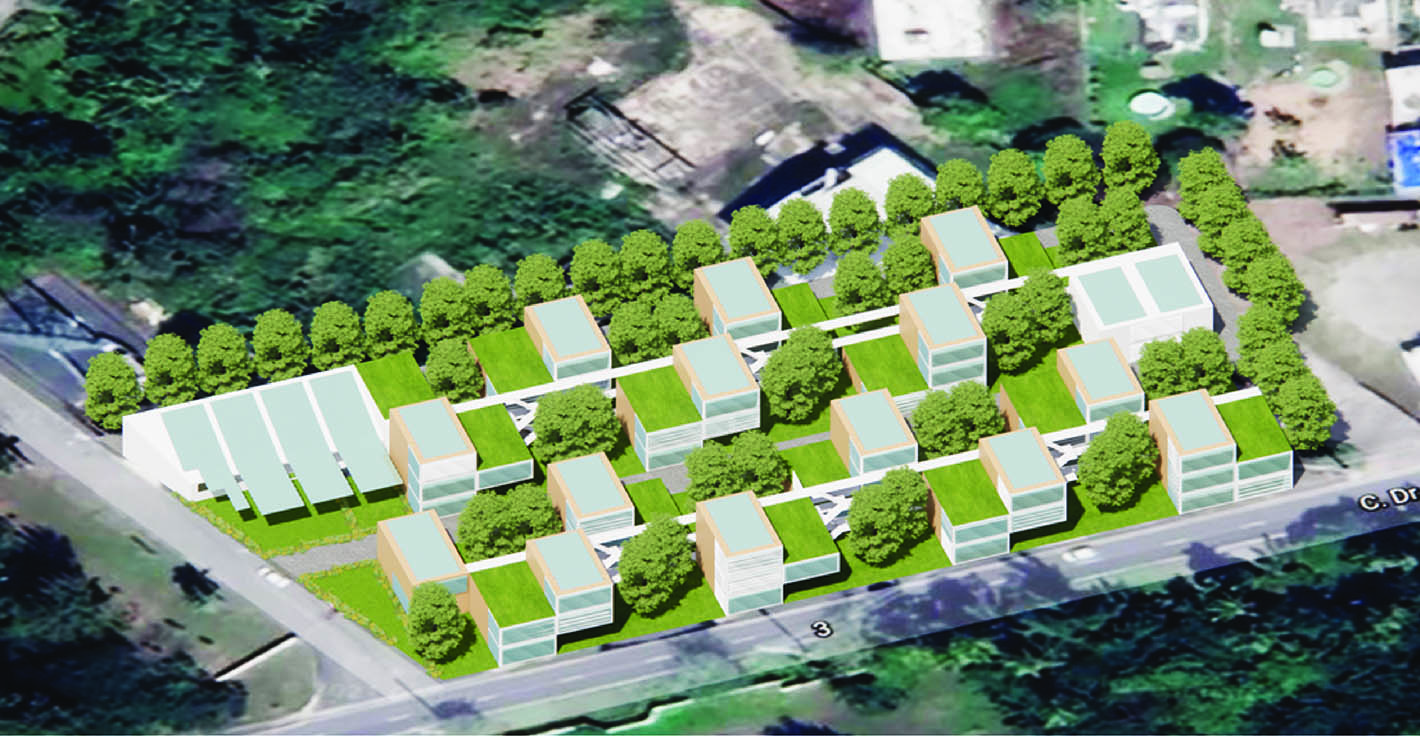Winning design goes resilient with innovative materials
PAE explores R&D and wins First Place at ASHRAE LowDown Showdown
In an industry that is defined by real world constraints, sometimes the best innovation is simply stepping out of the narrow path and experimenting. That’s what the Planeteers team discovered when they came together to tackle the ASHRAE LowDown Showdown. “Getting to have different perspectives on an approach and design was fantastic,” project lead and PAE mechanical engineer Forest Tanier-Gesner said, “as well as getting to fully commit to an approach without having real world budget constraints crush all our dreams.” The final design ended up winning both the First Prize and Fan Favorite.
“Receiving the news from Forest was one of the highlights of my year – great!”
Alan Shepherd, Team Coach and PAE Principal
The ASHRAE LowDown Showdown is a modeling competition that brings together a diverse group of building analysts, designers, architects, and engineers to collaborate on a challenge. Though the output is design only, the challenge relies on real-world modeling and technology to address actual building targets and constraints. The collaborative experience is a chance to work closely with other professionals and create effective workflows while experimenting with innovative design approaches.
In this challenge, PAE teamed with SHoP Architects to design a residential care center in Puerto Rico. It needed to have a strong community focus, include resilience for tenants and the community, have a low carbon footprint, be net zero energy, and be situated on an historically constrained site that is hard hit by hurricanes. As engineers, PAE normally arrives to a project after the site is chosen, so it was an interesting thought experiment to be involved at an earlier stage, according to Forest. Because of that, the team was able to include a number of considerations like how the island microclimates and prevailing winds might affect energy usage.
The end design is a collaborative victory, using passive architectural strategies for adaptive comfort, prefabricated units for cost efficiency and structural resilience, solar PV panels, energy storage, rainwater capture, cistern storage and onsite water treatment. In addition, it performs well on community resilience, with key systems on emergency power like kitchen operations and potable water treatment so it can provide resources to the community in a time of crisis.
Key to the design’s success and a big part of the R&D focus in general is the inclusion of innovative new materials, like a hygroscopic nanofiber membrane for passive dehumidification and a carbon negative concrete foundation.
With the freedom to explore various ideas and learn about things that would normally be outside an engineer’s scope, the payout was huge beyond winning first place.
“It was so valuable, being able to stretch our intellectual legs. Everyone was there because they really wanted to be involved as a passion project. ”
Forest Tanier-Gesner
Team:
PAE: Forest Tanier-Gesner, Project Lead; Alan Shepherd, Coach; Chrissa Turley, Designer & Modeler; Kirsten Robinson, Designer & Modeler
SHoP Architects: Chris Sharples, Principal; Annie Kwon, Architect; Jessie Li, Designer; Berardo Matalucci, Environmental Design



